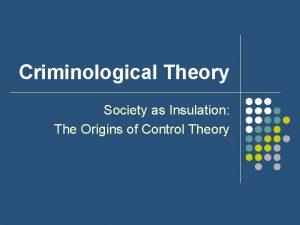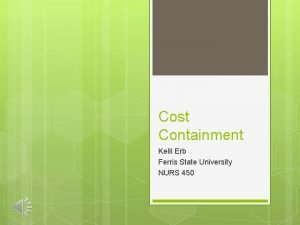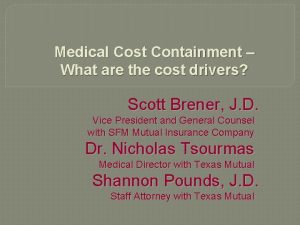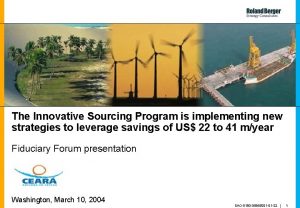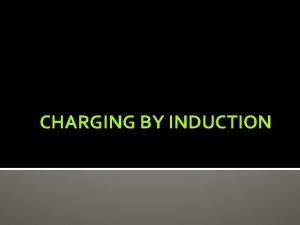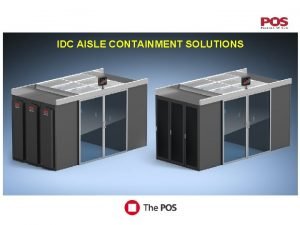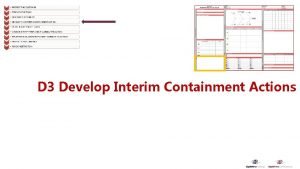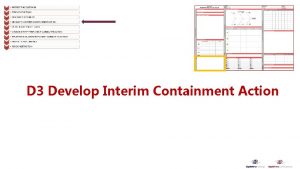Cost Containment Strategies to Scale Charging Access Overview










- Slides: 10

Cost Containment Strategies to Scale Charging Access Overview of Peninsula Clean Energy’s Utilization of Level 1 and Power. Managed Level 2 Charging

Peninsula Clean Energy is San Mateo County’s official electricity provider–generating clean and affordable power and making significant reinvestments back into the community. Peninsula Clean Energy How it works 2

Challenges with EV Charging • California projected need: o 3. 8 M - 6 M charge ports by 2030 o Expected to fall short of EVSE goals • Multifamily access is especially critical • Major equity implications • Principal gating issue is cost • Level 2 (L 2) per port costs: o ~$5, 000 (MCE) to ~$18, 000+ (PG&E) Peninsula Clean Energy 3

Charging Levels Corridor/travel, supplemental Supplemental Fast Charging Destination 100 k. W+ 7 – 100 k. W+ Daily Workplace 1. 4 - 7 k. W Daily Residential 1. 4 - 7 k. W Peninsula Clean Energy 4

Model for Ubiquitous Access • Driver need? ~ 25 - 35 mi/day • 1 hour on 7. 2 k. W L 2 – far overbuilt for resi • Level 1 1. 4 k. W provides 40 -50+ miles overnight o Level 1 (120 v) and power managed L 2 (240 v) • 50% of drivers today successfully use Level 1 • Costs o Level 1: as low as $1, 900/port o Power managed L 2: as low as $3, 600/port o 4 x to 6 x the number of ports for same capacity o New construction: 3 – 4 x less than retrofitting later Peninsula Clean Energy 5

What are Advanced Load Mgmt Systems? • Designed to balance power so that total energy draw doesn’t exceed a circuit or panel capacity • Only triggered when enough EV charging occurs • Can avoid significant electrical capacity upgrades • NEC 625. 14 and UL approved for safety • Two configurations: panel sharing and circuit sharing NEC 625. 14 “Where an automatic load management system is used, the maximum electric vehicle supply equipment load on a service and feeder shall be the maximum load permitted by the automatic load management system. ” Peninsula Clean Energy 6

Circuit Sharing Example Definition: Multiple charging stations share the same electrical circuit Circuit 40 A (32 A draw) 7. 6 kw 40 A 40 A Unmanaged EVSE load = 160 A, 28. 8 K (4 x oversubscription) Peninsula Clean Energy When one EV is actively charging, all circuit power is delivered to that station 7. 2 k W 3. 6 k W Power is divided evenly as additional EVs are actively charging on the same circuit 1. 8 k W W Minimum of ~60 miles of range provided over 9 -hour workday at offices or overnight charge at MUDs. Real-world charge will be higher due to power balancing. 7

Multi-Family EVSE Retrofit Example Background 17 -unit apartment building in San Mateo County, built in 1975 Not enough power in main panel to support Level 2 charging for all residents at full power (40 amps each) San Mateo Apartments Project Details Original request: 2 Level 2 dual-port stations (4 ports total) Accepted project: 1 Level 2 dual-port station with power management and 15 Level 1 outlets (17 ports total) Provides charging to all residents Per port cost: $5, 300 (total cost estimate: $90, 600) Installing 17 Level 2 ports would have cost at least $250, 000+ (average $14, 750+/port) and more if a new PG&E transformer was required Peninsula Clean Energy 8

Issues with CALGreen Residential Approach 1. Overinvests electrical infrastructure 20% get everything o Most capacity is unutilized 2. Doesn't address critical cost barriers o High cost model 80% get nothing 3. Restricts EV adoption o Very limited access (most parking is assigned) 4. Codifies inequities o Extremely high subsequent costs ($25 -50 k? ) 5. Ignores fed/state/local momentum for power management o NEC code, CPUC VGI, local reach codes Peninsula Clean Energy 9

Local Reach Code Adoption • Multi-family code o Every residential unit gets EV Ready space (circuit + outlet) o First 20 + 25% Level 2 Ready, 75% Level 1 Ready o Power management explicitly allowed • Details: www. peninsulareachcodes. org Peninsula Clean Energy 10
 Containment theory criminology
Containment theory criminology Alice cost containment
Alice cost containment Accent cost containment solutions
Accent cost containment solutions Nicholas tsourmas
Nicholas tsourmas Cost containment definition
Cost containment definition Terminal access controller access control system
Terminal access controller access control system Terminal access controller access-control system
Terminal access controller access-control system Cost reduction strategies
Cost reduction strategies Pharmacy cost reduction strategies
Pharmacy cost reduction strategies What was the policy of containment
What was the policy of containment John foster dulles apush
John foster dulles apush
